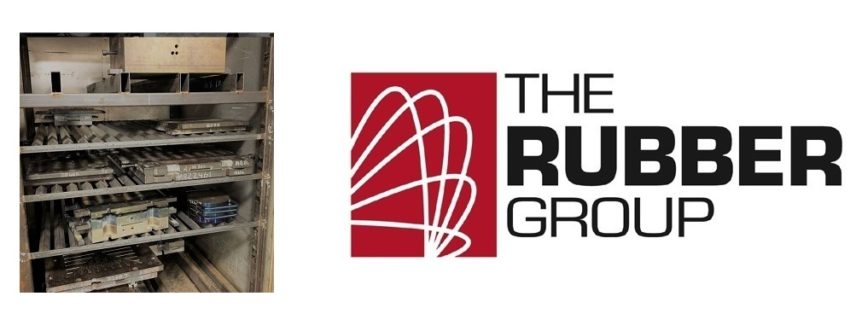Flashless molding uses precision tooling to mold rubber parts with only small amounts of flash, excess material that forms on part surfaces during injection or transfer molding. Flashfree, or trimless molding, is not truly flash-less then. Rather, flashless molding produces a very small amount of controlled flash thickness and extension.
If you’re considering flashless molding, then it’s important to know that the tooling is more expensive. However, flashless molds reduce project costs over time by eliminating secondary deflashing operations and the handwork and inspection that’s associated with them. Keep reading to learn more about flashless molding or contact The Rubber Group to discuss your specific application.
What is Flashless Tooling?
Flashless tooling has “floating” cavities in the mold plates. These cavities are said to “float” because they can move freely and are not all cut into the same plate. To provide horizontal registration, taper angles or other alignment features are used. They provide very tight control of mold cavity alignment and prevent mismatches that can result in defects. Importantly, flashless tooling requires very tight tolerances (+/- 0.0001 – 0.0002”) on the machined mold inserts.
How Flashless Molding Works
During flashless molding, the pressure of the material in the pot pushes on the top cavity. This vertically seats all of the cavities together and applies pressure to any overmolded inserts. Because the cavities float, the mold can handle a fair amount of variation in insert height and still shut-off at the insert to prevent the rubber from flashing-out. Engineered vents or grinds at the parting line are large enough to allow air to escape, but small enough that the rubber can’t escape and create flash.
Mold Flash and ARPM Classes
The Rubber Group can produce parts that are flashfree on the areas you designate on your parts drawing. We can also mold rubber parts with flash that is within allowable limits according to drawing designations from the Association for Rubber Products Manufacturers (ARPM) The table below lists and describes these designations.
| Designation | Description |
| T .00mm | (T .000) No flash permitted on area designated. |
| T .08mm | (T .003) Normally requires buffing, facing, grinding, or a similar operation. |
| T .40mm | (T .016) Normally requires precision die trimming, buffing, or extremely accurate trimming. |
| T .80mm | (T .032) Normally necessitates die trimming, machine trimming, tumbling, hand trimming, or tear trimming |
| T 1.60mm | (T .063) The normal tear trim tolerance |
| T 2.35mm | (T .093) Normally requires die trimming, tear trimming, or hand trimming of some type. |
| T ∞ | No flash limitation. |
When deciding which flash designation to put on your part drawing, it’s important to remember that tooling costs generally increase as allowable flash decreases. If you don’t require flashless molding, The Rubber Group can use its cryogenic deflashing equipment to remove flash from your parts. This secondary finishing process tumbles your molded parts at up to –160° F so that the part temperatures are below the rubber’s brittle point, enabling the flash to readily separate from part surfaces.
When to Use Flashless Tooling
Flashless tooling is used when the elimination of finishing operations can significantly reduce costs. Typically, this is for parts where flash removal is especially problematic because of geometric features such as thin, precise sections. It’s not impossible to deflash parts like this, but significant time and labor is required because of the handwork and inspection involved.
With hard-to-deflash parts, the return on investment (ROI) for flashless tooling can be fast. Generally, a simple ROI calculation can be used to determine if the added expense makes sense. Still, low-volume parts that are very difficult to deflash may not justify flashless tooling. That’s because the labor cost of parts deflashing is well below the additional cost of the flashless mold.
Flashless tooling is also used for the elimination of secondary operations on overmolded parts where flash removal is time-consuming and not ergonomic. Consider, too, that cryogenic deflashing won’t resolve the issue of flash leakage on an overmolded parts. When cryogenic deflashing makes sense, it’s important to balance its benefits against the additional time and costs for this secondary process. Manual flash removal methods such as hand trimming are even more labor-intensive.
Flashless Molds and Custom Rubber Parts
The Rubber Group provides both flashless and non-flashless molding for standard and custom rubber parts. The benefits of working with us include value-added manufacturing services from drawing development and help with material selection to laser marking and packaging and shipping. Contact us for more information about flashless molding, or request a quote if you’re ready to get started.

